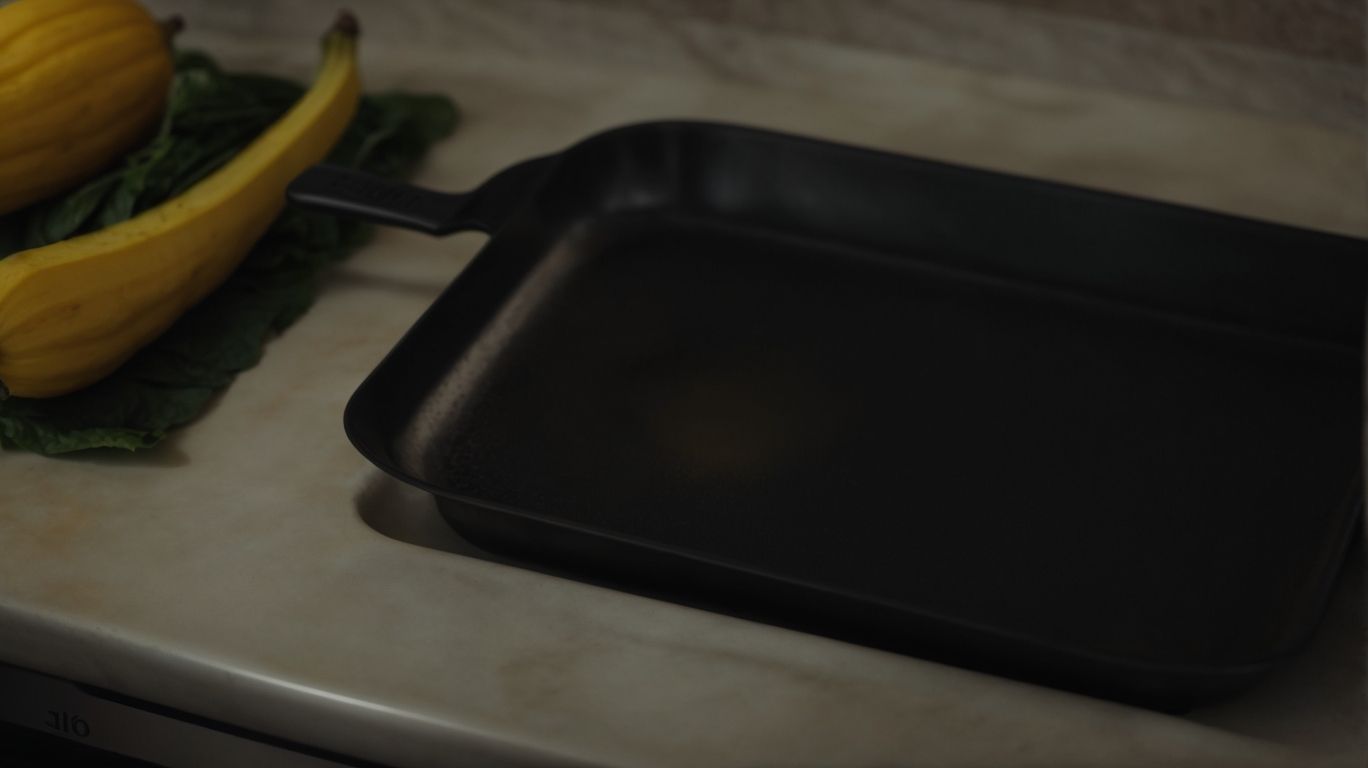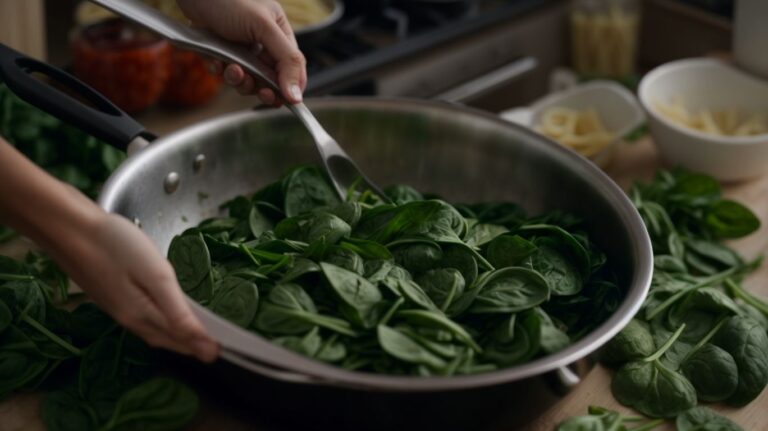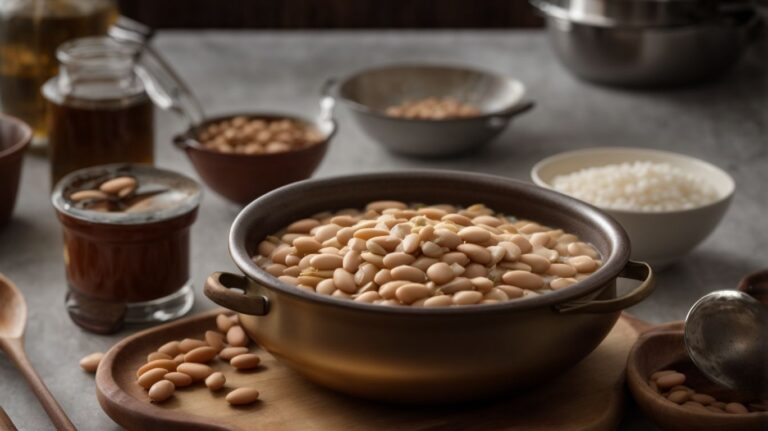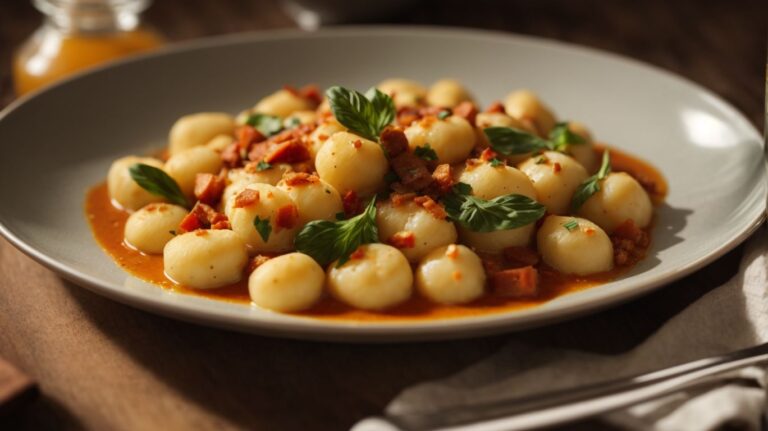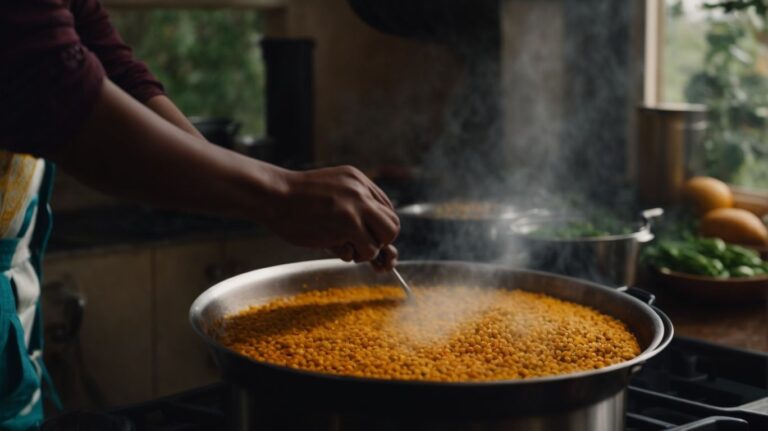How to Cook Yellow Squash on the Stove?
Looking to add a versatile and nutritious vegetable to your cooking repertoire? Yellow squash is a great option!
We will explore everything you need to know about yellow squash, from its nutritional value to how to select and prepare it for cooking.
Discover different ways to cook yellow squash on the stove and try out some delicious recipes. Time to grab your apron and start cooking with yellow squash!
Key Takeaways:
What is Yellow Squash?
Yellow squash, a versatile summer vegetable, is a staple in many delicious and healthy recipes, perfect for the summer months.
Whether it’s the star of a colorful sauté, a nutritious addition to a refreshing salad, or even grilled to perfection, yellow squash adds a pop of flavor and vibrancy to any dish. Its mild, slightly sweet taste complements various cuisines, from Mediterranean to Asian. Rich in nutrients like vitamins A and C, as well as fiber, yellow squash promotes a healthy diet and is low in calories, making it a fantastic choice for those looking to maintain a balanced meal plan. Embrace this vibrant vegetable in your cooking repertoire and elevate your summer dishes to new heights!
What is the Nutritional Value of Yellow Squash?
Yellow squash boasts a rich nutritional profile, being a healthy and delicious addition to various recipes.
Loaded with essential vitamins and minerals like vitamin C, vitamin A, potassium, and fiber, yellow squash is a powerhouse of nutrients that promote overall well-being. These nutrients support immune function, vision health, and digestive health. Its low calorie content makes it an ideal ingredient for those looking to maintain a healthy weight. Incorporating yellow squash into meals not only adds a burst of color but also enriches the flavor profile with a subtle sweetness, making any dish both nutritious and delicious.
How to Select and Prepare Yellow Squash for Cooking?
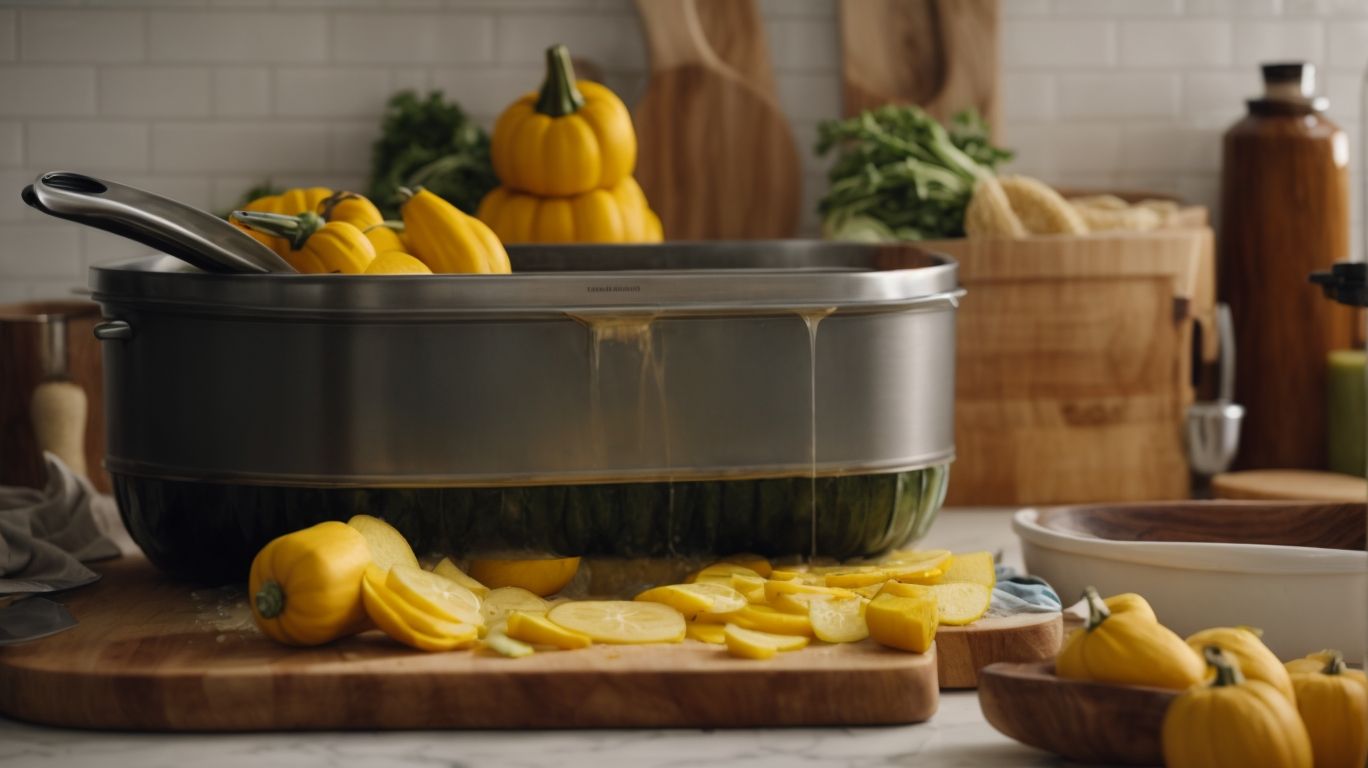
Credits: Poormet.Com – Adam Garcia
Selecting and preparing yellow squash for cooking involves choosing fresh produce and employing the right techniques to enhance its natural flavors.
When selecting yellow squash, look for firm, smooth skin with vibrant yellow color and without any blemishes or soft spots. Opting for organic varieties ensures a higher quality and more flavorful end result.
To prepare yellow squash, start by washing it thoroughly under running water. Trim off the ends and then slice it into desired shapes, such as rounds or spears, depending on the recipe you plan to follow.
Yellow squash can be cooked using various methods like roasting, sautéing, grilling, or even baking, each imparting its unique taste and texture to the dish.
What to Look for When Selecting Yellow Squash?
When selecting yellow squash, look for fresh, high-quality produce available at your local market to ensure the best ingredients for your recipes.
Inspect the squash for firmness and brightness in color, avoiding any soft spots or blemishes that indicate age or spoilage. Choose smaller squash for a more tender texture and sweeter flavor, ideal for sautéing or roasting. Check the stems to ensure they are green and intact, a sign of freshness. Remember that yellow squash should feel heavy for its size, indicating juiciness and plumpness. When preparing dishes like ratatouille, stir-fries, or salads, opt for freshly picked yellow squash for maximum taste and nutritional benefits.
How to Wash and Cut Yellow Squash?
Washing and cutting yellow squash into uniform rounds is essential preparation before incorporating it into your favorite recipes.
Before you start, make sure to wash the yellow squash thoroughly under running water to remove any dirt or residue.
Next, using a sharp knife and a stable cutting board, carefully slice off both ends of the squash. Then, proceed to slice the squash into even rounds to ensure uniform cooking. To achieve this, aim for slices that are about 1/4 to 1/2 inch thick. If you prefer a different shape, such as cubes or strips, adjust your cutting technique accordingly. Regardless of the shape, consistency in size is key to even cooking. Remember to always use caution while slicing to prevent any accidents.
What are the Different Ways to Cook Yellow Squash on the Stove?
Cooking yellow squash on the stove offers various methods such as sautéing, stir-frying, boiling, and baking, each bringing out unique flavors and textures.
When you sauté yellow squash, you quickly cook it in a hot skillet with some oil or butter. This method results in a tender texture with a hint of caramelization on the edges, enhancing the natural sweetness of the squash.
On the other hand, stir-frying involves high heat and constant stirring, creating a slightly crisp exterior while maintaining a juicy interior.
Boiling yellow squash may seem simple, but it’s a great way to preserve its fresh taste and soft texture. It can lead to mild flavor loss compared to other methods.
Baking, on the other hand, can transform yellow squash into a creamy, savory delight, especially when combined with herbs and breadcrumbs.
Sautéing
Sautéing yellow squash in a skillet with olive oil, garlic, and herbs creates a flavorful and aromatic side dish perfect for any meal.
When sautéing yellow squash, it is important to slice them evenly to ensure uniform cooking. Begin by heating olive oil in a skillet over medium heat, adding minced garlic for a fragrant base flavor. The key is to cook the squash until they are tender but still slightly crisp, usually taking around 5-7 minutes.
To enhance the taste, experiment with herb combinations like thyme and oregano or basil and parsley. The herbs not only add depth to the dish but also provide a fresh and savory element. Remember to toss the squash occasionally in the skillet to ensure even cooking and flavor distribution.
Grilling
Grilling yellow squash during the summer enhances its natural flavors, creating a delicious and healthy vegetable side dish.
When you grill yellow squash, the heat helps caramelize the natural sugars in the vegetable, intensifying its sweetness and adding a delightful smoky flavor. Grilling also imparts those beautiful char marks, giving the dish an appealing visual appeal that is perfect for summer gatherings. The versatility of grilling allows you to experiment with different seasoning blends such as garlic, herbs, or a sprinkle of olive oil for that extra richness.
Stir-frying
Stir-frying yellow squash in a wok with fresh ingredients creates a flavorful and vegan dish that is both healthy and delicious.
Yellow squash’s tender texture makes it an ideal vegetable for stir-frying, as it quickly absorbs the vibrant flavors of spices and sauces. To enhance the dish’s vegan appeal, consider adding tofu or tempeh for a protein boost, creating a satisfying meal. Experiment with different seasonings such as garlic, ginger, and soy sauce to elevate the taste profile. For those looking to add a crunchy element, toss in some cashews or sesame seeds towards the end of cooking. Don’t overcook the squash to maintain its crunchiness and vibrant color, ensuring a visually appealing and mouthwatering dish.
Boiling
Boiling yellow squash is a simple method that results in tender and flavorful squash, perfect for incorporating into various dishes.
When preparing yellow squash by boiling, all you need to do is wash the squash, trim the ends, and cut it into slices or cubes for even cooking. Then, simply bring a pot of water to a boil, add a pinch of salt, and gently drop in the prepared squash pieces. Let them cook for about 5-7 minutes until they are fork-tender but still retain a slight bite. Do not overcook them to maintain that perfect texture.
For seasoning options, you can keep it simple with just salt and pepper, or you can enhance the flavors by adding a knob of butter or a sprinkle of your favorite herb such as thyme or parsley.
Once the squash is tender, drain them and serve hot as a side dish alongside grilled chicken, steaks, or even over cooked quinoa or rice for a wholesome meal.
Baking
Baking yellow squash with a crispy panko topping and herb oil creates a delicious and crunchy side dish that is sure to be a favorite at any meal.
If you’re looking to elevate the flavors in your baked squash, consider adding a sprinkle of freshly grated Parmesan cheese to the panko breadcrumbs mixture before baking. This addition not only enhances the crispy texture but also infuses a rich, savory taste to each bite.
Another delightful twist is to drizzle a garlic-infused olive oil over the squash before serving, adding a subtle aromatic note that complements the natural sweetness of the vegetable.
What are Some Delicious Recipes for Cooking Yellow Squash on the Stove?
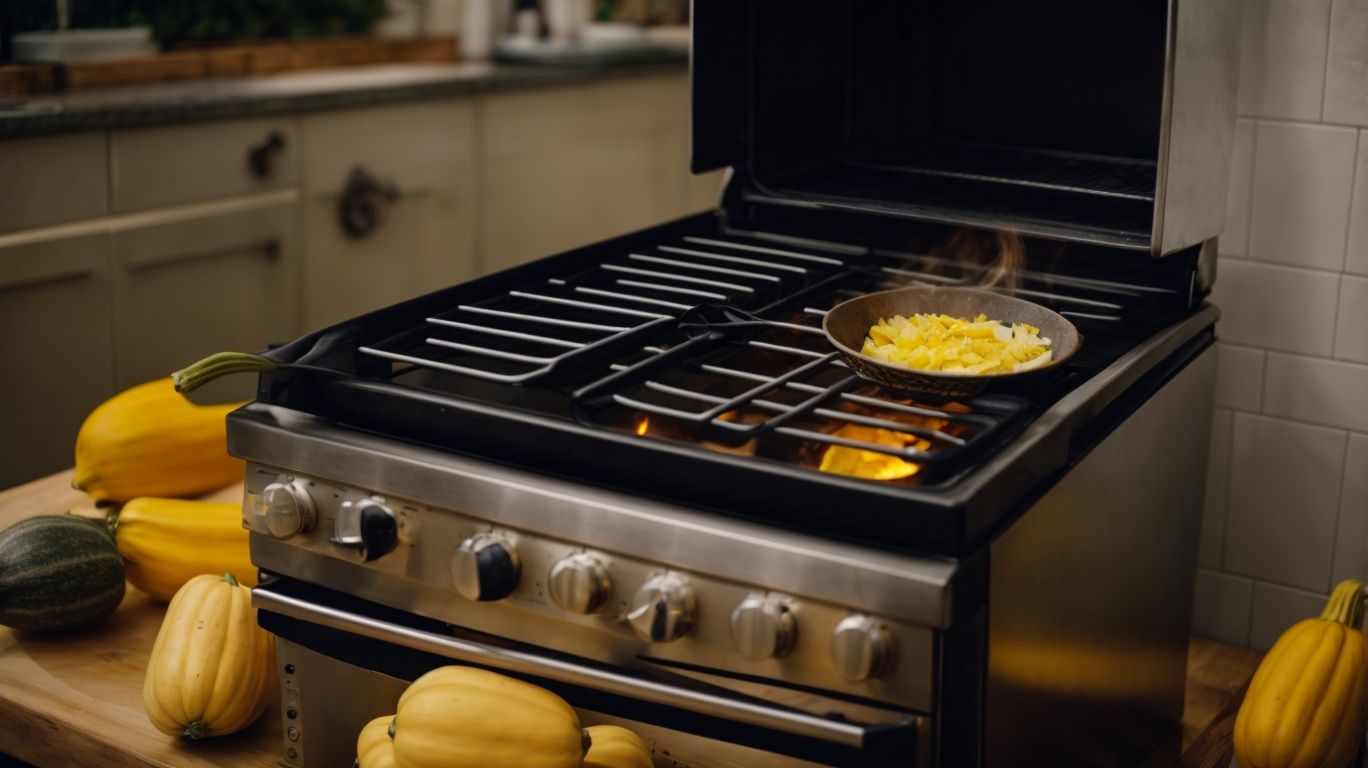
Credits: Poormet.Com – Randy Nelson
Discover some delightful recipes for cooking yellow squash on the stove, offering delicious and easy meal options suitable for vegans and those looking for bold flavors.
One delectable option is to sauté thinly sliced yellow squash with garlic, olive oil, and a pinch of red pepper flakes for a simple yet flavorful side dish. For a heartier meal, consider incorporating yellow squash into a vegetable stir-fry with bell peppers, onions, and tofu for a satisfying vegan entrée.
Another fantastic way to enjoy yellow squash is by roasting it with fresh herbs such as thyme and rosemary, enhancing its natural sweetness. To add a burst of color and nutrition, mix roasted yellow squash with cherry tomatoes and chickpeas drizzled with a lemon tahini dressing.
Yellow Squash and Parmesan Frittata
Indulge in a savory Yellow Squash and Parmesan Frittata, a delectable recipe perfect for brunch or as a satisfying meal any time of day.
If you are looking for a dish that marries the fresh flavors of yellow squash with the richness of Parmesan cheese, this frittata is a must-try. The combination of sautéed squash, creamy eggs, and the nutty taste of Parmesan creates a delightful harmony of flavors that will impress your taste buds.
Cooking tip: Be sure to sauté the squash until it’s tender but not mushy, as it should provide a slight bite in the frittata. Whisking the eggs well before pouring them over the cooked vegetables ensures a fluffy and light texture.
For ingredient substitutions, you can experiment with different types of cheese such as Gruyère or cheddar if you prefer a different flavor profile. Feel free to add in herbs like thyme or basil for an extra layer of freshness.
When presenting this dish, consider garnishing with fresh parsley or basil leaves for a pop of color. Whether served hot or at room temperature, this frittata is a versatile option that is sure to please any crowd.
Yellow Squash and Zucchini Gratin
Delight your taste buds with a creamy Yellow Squash and Zucchini Gratin, a cheesy and comforting side dish that pairs perfectly with any main course.
This irresistible gratin brings together the delicate flavors of yellow squash and zucchini, enveloped in a luscious cheese sauce that is rich and decadent. The key to achieving the perfect texture lies in baking the ingredients to golden perfection, creating a crispy top layer that contrasts beautifully with the soft, tender vegetables underneath. You can customize the type of cheese used, opting for sharp cheddar, gruyere, or Parmesan to add depth of flavor. For a burst of aroma and taste, consider incorporating fragrant herbs like thyme or rosemary into the dish, elevating its overall profile.
Yellow Squash and Shrimp Stir-fry
Whip up a delicious Yellow Squash and Shrimp Stir-fry, a flavorful seafood recipe bursting with juicy squash and succulent shrimp in every bite.
If you’re looking to add an easy-to-make yet impressive dish to your culinary repertoire, this Yellow Squash and Shrimp Stir-fry is the perfect choice. The secret lies in the harmonious combination of fresh yellow squash, plump shrimp, and a medley of vibrant seasonings that elevate the flavors to a whole new level.
To achieve that coveted umami taste, start by searing the shrimp until they are perfectly cooked, then quickly sauté the tender squash to retain its crisp texture. Incorporating a hint of minced garlic and ginger adds a delightful aroma and depth of flavor, enhancing the overall taste profile of this exquisite stir-fry. Don’t forget to drizzle a homemade sauce made from soy sauce, oyster sauce, and a dash of honey to tie all the ingredients together in a mouthwatering symphony.
Yellow Squash and Sausage Skillet
Try a savory Yellow Squash and Sausage Skillet recipe that combines the flavors of summer squash and hearty sausage in a delicious one-pan meal.
Cooking this delightful Yellow Squash and Sausage Skillet recipe is a breeze. Begin by heating some oil in a skillet over medium heat. Add sliced sausage and cook until browned. Then, toss in diced yellow squash, onions, and garlic. Let them sauté until tender-crisp. To elevate the dish’s taste, season with salt, pepper, and a sprinkle of chili flakes for a subtle kick.
This comforting skillet meal pairs exceptionally well with a side of fluffy rice or warm crusty bread. Garnish with fresh herbs like parsley or basil for a pop of color and freshness. The blend of flavors and textures in this dish makes it a perfect choice for a quick weeknight dinner or a cozy weekend meal with loved ones.
Tips and Tricks for Cooking Yellow Squash on the Stove
Enhance your yellow squash dishes with valuable tips and tricks to prevent sogginess, amplify flavor, and effectively store leftover cooked squash for later use.
Regarding seasoning yellow squash, opt for herbs like thyme, basil, or oregano to enhance its natural flavors. Experiment with spices such as garlic powder or paprika for a kick of taste. Sautéing your squash on medium-high heat in olive oil for around 5-7 minutes can help maintain its firm texture.
If you have leftovers, store them in an airtight container in the refrigerator, and they’ll keep well for up to 3 days. To reheat, simply pan-fry or bake the squash to rejuvenate its deliciousness.
How to Prevent Yellow Squash from Becoming Soggy?
To prevent yellow squash from becoming soggy, ensure proper cooking techniques that result in a crispy yet tender texture, preserving the natural flavor of the vegetable.
When preparing yellow squash, opt for quick cooking methods such as sautéing or stir-frying over boiling or steaming to minimize water absorption.
- It’s essential to cut the squash into uniform pieces to ensure even cooking.
- Consider using high heat and cooking in small batches to avoid overcrowding the pan.
Coating the squash lightly in cornstarch or flour before cooking can help create a delicious crispy exterior while maintaining a soft interior.
How to Add Flavor to Yellow Squash?
Enhance the flavor of yellow squash by incorporating a variety of ingredients, herbs, and spices that complement its natural taste and elevate the dish to new culinary heights.
For a burst of freshness, try combining sautéed yellow squash with cherry tomatoes, basil, and a drizzle of balsamic glaze. This simple yet flavorful dish brings out the sweetness of the squash while adding a tangy twist.
Garlic, shallots, and a dash of red pepper flakes can add depth and complexity to roasted yellow squash, creating a satisfying umami-rich flavor profile. Seasoning with a blend of cumin, paprika, and a hint of smoked sea salt can transform grilled yellow squash into a smoky sensation, perfect for summer barbecues.
How to Store Leftover Cooked Yellow Squash?
Properly store leftover cooked yellow squash by refrigerating it promptly and utilizing creative reuse strategies to transform it into new dishes or meal components.
Yellow squash, when stored in an airtight container, can stay fresh in the refrigerator for up to 3-4 days. For prolonged freshness, consider wrapping the squash in a damp paper towel before refrigerating. When ready to use the leftovers, consider reheating them in the oven or skillet with a drizzle of olive oil and a sprinkle of seasonings for added flavor.
- For a quick lunch idea, incorporate leftover yellow squash into a fresh salad along with cherry tomatoes, feta cheese, and a light vinaigrette dressing.
- Transform leftover squash into a flavorful soup by blending it with vegetable broth, garlic, onions, and herbs for a comforting meal option.
Frequently Asked Questions
1. How to Cook Yellow Squash on the Stove?
Follow these simple steps to cook yellow squash on the stove: 1) Wash and slice the squash into desired thickness, 2) Heat a skillet on medium-high heat, 3) Add oil or butter to the skillet, 4) Once the oil is hot, add the squash slices to the skillet, 5) Cook for 5-7 minutes, stirring occasionally, until the squash is tender.
2. What equipment do I need to cook yellow squash on the stove?
You will need a skillet, a sharp knife, and a cutting board to cook yellow squash on the stove.
3. Can I use other types of squash for this recipe?
Yes, you can use other types of squash, such as zucchini or pattypan squash, following the same instructions.
4. How do I know when the yellow squash is cooked?
The yellow squash will be tender and easily pierced with a fork when it is cooked.
5. What seasonings can I use to enhance the flavor of the yellow squash?
You can use a variety of seasonings, such as salt, pepper, garlic powder, and herbs like thyme or basil, to enhance the flavor of the yellow squash.
6. How can I store leftovers?
Allow the cooked squash to cool completely, then store it in an airtight container in the refrigerator for up to 3 days. Reheat in the microwave or on the stove before serving.

